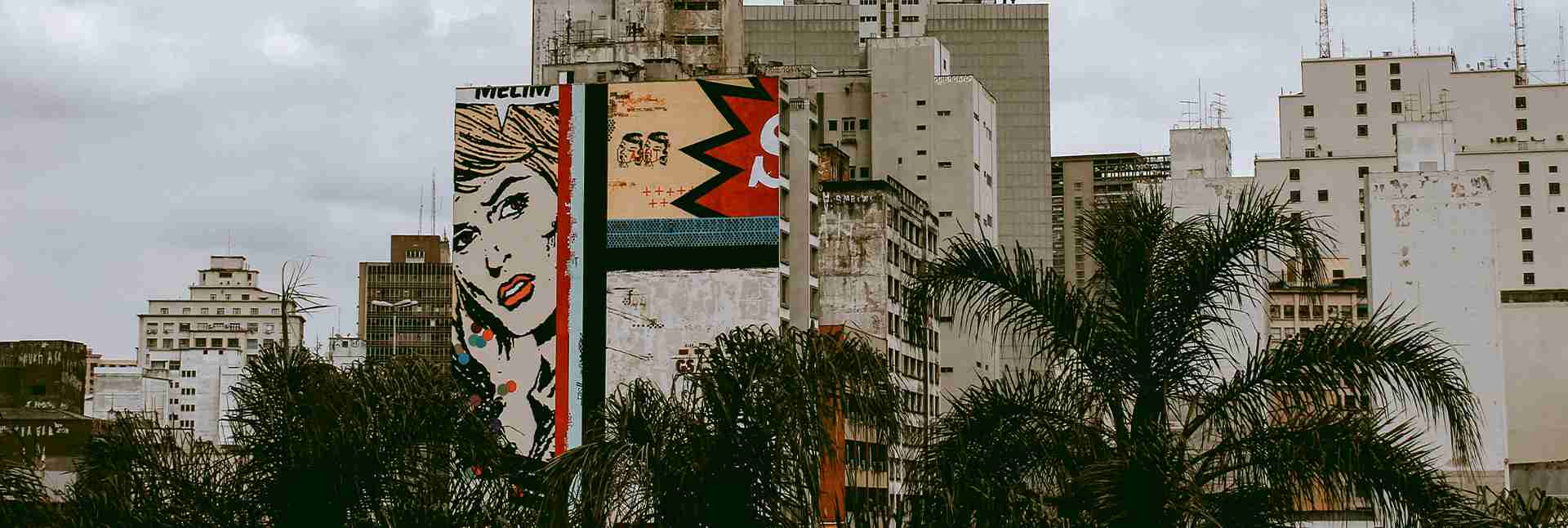Sao Paulo is an urban beast. Like any great metropolis, it has an imagined ‘ideal’ face; sanitised, skyscraper-ridden, and sufficiently Americanised – and a dark underbelly; overcrowded, crime-ridden, torn by racial violence, and in the throes of political and economic crisis. And like anywhere else, these ideas of the city are constantly at war.
What’s uniquely Paulista is that the contours of this war play out on the city’s walls where its street art and graffiti square off.
Walking around SP, one sees incredible, complex street art that looks like they could grace any contemporary art gallery in Europe. Phantasmagorical purple tentacles, Batman, starving kids and the odd Milky Way jostle for space in recently designated street art areas such as Vila Madalena. The new mayor, as part of his city beautification scheme has restricted street art and its popping colours to a few tourist hotspots. Older art that continues to brighten the grey city tend to be spoken of as landmarks – such as – “we need to catch the exit after the mermaid mural”.
Driving around Sao Paulo, however, shows a different city. When I lifted my eyes to the sky, I saw what seemed like angry black letters covering the tallest floors of the grey edifices. Locals call this pixação, the jagged foot-high lettering inspired by heavy metal album covers from the 60s. Many locals call this ‘defacement’ – skyscrapers ruined by angry, dispossessed “pixadores” who refuse to call their graffiti street art. There is little room to stop and really look at this graffiti. Most of it is designed to make no sense in isolation, but to act as a mark of presence – that the marginalised have been “here” and lay their claim to it as much as any other resident of the city.
Pixadores stake out the visible/invisible and frame them anew. The abandoned skyscrapers that violently expel homeless squatters; the expensive neo-classical fountains in business districts that eat into municipal money. Pixadores measure success by reaching the highest heights, the trickiest corners, the most blatantly public installations. Overnight, their angry letters swarm facades, leaving resentment with no one to punish.
Street art, increasingly, is a genteel pursuit. They no longer frame the invisible – they turn facades into appealing frames for loiterers, the curious and the aficionados. They’ve been around so long that artists have followings in the millions, shows at the Tate, approval from the far-right Mayor to beautify the city. Pixadores call this ‘selling out’. But the peculiar power of pixação may not speak for the city without the newly legitimised status of street art, its once-radical predecessor .
This is the reality of great cities today. As the alternative becomes mainstream, new alternatives come up to challenge the status quo. Rather than looking at one or the other, a city’s fabric makes sense only when seen as a conversation between the mainstream and the alternative. Sao Paulo isn’t a city of street art versus pixação – it is about the conversation between the two, and the ideas of the city that emerge from their mingling.






